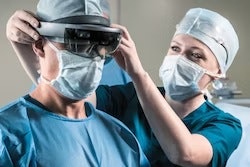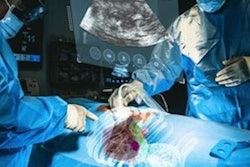
Although some technical hurdles still remain, virtual reality (VR) and augmented reality (AR) technologies are poised to have a profound impact on image visualization in neurosurgery, according to research published October 5 in the journal World Neurosurgery.
After performing an extensive literature review, a team of researchers from the Mayo Clinic in Rochester, MN, found that although mixed-reality methods such as VR and AR have yet to achieve widespread adoption, there is significant opportunity for these techniques to enhance neurosurgery.
"There are limitations in the usage of these systems in the context of neurosurgery with increased computational demands and limited applications," wrote first author Dr. Sulaman Durrani, corresponding author Dr. Mohamad Bydon, and colleagues. "Nevertheless, they remain to be an exciting imaging modality that could have considerable implications in supporting the role of a neurosurgeon in their current and future practice."
The researchers searched PubMed, OVID Medline, and EMBASE for journal articles published from January 1, 2006, to April 2, 2022, with terms including augmented reality, spinal surgery, virtual reality, and neurosurgery. After an initial review of 121 studies, 13 studies were included in the final analysis. These studies included 162 patients, 550 screw placements, 58 phantom spines, and learning points from simulation training of 276 residents.
Immersive VR technology can be utilized in both educational and clinical applications, offering ultrarealistic body parts or "avatars" for simulation training and serving as an indispensable tool for surgical planning. Utilization in clinical practice is only just being fully realized, however, according to the authors.
Outcome studies for VR "represent VR as a reliable and recommended instrument for educating the new generation of scholars in expert fields," the authors wrote.
On the other hand, AR technology has been applied to simulation, as well as training of neurosurgeons and residents. It's been utilized in various neurosurgical subspecialties.
"Although still in its early days of technology, AR has been recommended in studies due to its potency in medical training, motivating academicians to explore its potential to lead a new era of modern pedagogical skills," the authors wrote.
In terms of cost-effectiveness, VR can provide a cost-effective, immersive simulation experience for several applications, including its use for graded-exposure therapy in soldiers suffering from post-traumatic stress disorder. It can also be cost-effective for training.
"The customizability and adaptability of fully immersive VR technologies make them ideal instruments for cost-effective neurosurgical training moving forward," the authors wrote.
AR, however, may be a different story. The various components of AR technology can cost over $10,000, and hospital systems looking to implement these systems will need to first assess the up-front costs, according to the researchers.
"At present, it is difficult to assess the cost-effectiveness of these AR systems in the clinical setting due to the experimental nature of their current applications," the authors wrote. "However, there is good reason to believe that AR has the potential to improve the overall clinical outcomes for patients."
The researchers noted that AR is increasingly being used in minimally invasive surgeries, which have been shown to be associated with shorter hospitalizations and therefore larger potential cost savings. Furthermore, AR shows strong potential for reducing iatrogenic injuries across many specialties and can reduce the overall cost of healthcare per patient, according to the authors.
The literature review showed that the VR and AR systems differ in terms of technological features, indications, outcomes, limitations, and cost-effectiveness, the researchers said.
"Based on ongoing and evolving applications of the VR and AR systems, their innovative potential they make available to the future of neurosurgical patient care makes clear the need for further studies to understand the nuances between their differing technological advances," the authors wrote.



















